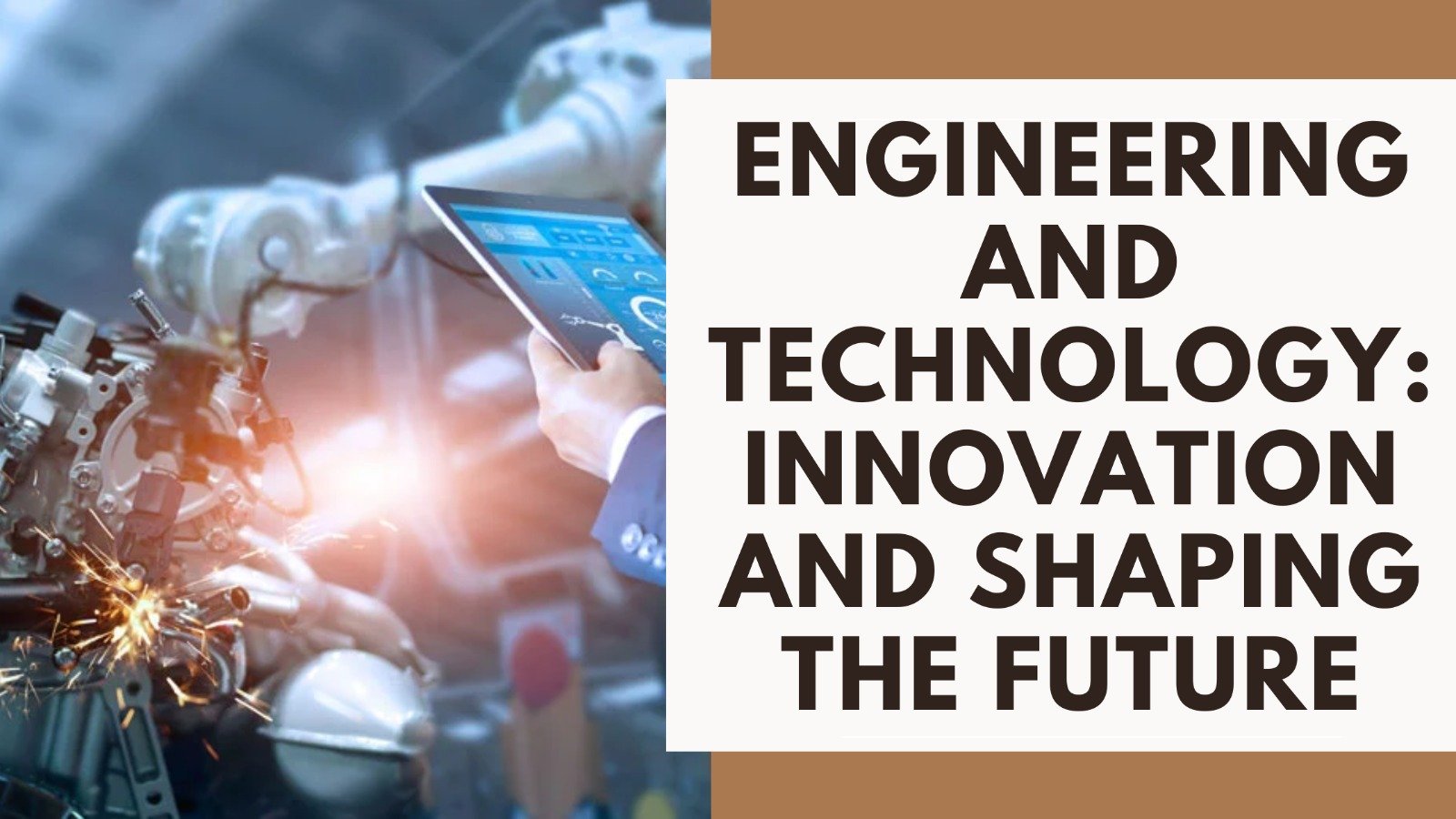
Introduction
In today’s fast-paced world, engineering and technology play a pivotal role in shaping modern life. From the smartphones in our hands to the skyscrapers that define city skylines, the influence of these two fields is omnipresent. Engineering focuses on applying scientific principles to design, build, and maintain structures, machines, and systems. Technology, on the other hand, is the practical application of scientific knowledge for various purposes, particularly in industry and everyday life.
1. What is Engineering and Technology?
Engineering is the application of scientific and mathematical principles to develop solutions that improve the functionality of various systems and structures. Engineering encompasses several branches such as civil, mechanical, electrical, chemical, and computer engineering, each with its own unique focus and contributions.
Technology refers to tools, machines, techniques, and systems that are created to solve problems or improve existing solutions. The word “technology” comes from the Greek words “techne” (craft) and “logia” (study), indicating the importance of knowledge and innovation in this field.
Together, engineering and technology form the backbone of modern innovation, addressing complex challenges and making our lives more efficient.
2. The Relationship Between Engineering and Technology
Engineering and technology are deeply interconnected. Engineers create technologies, while technology aids engineers in the design and development of new solutions.
For instance:
- Mechanical engineers use computer-aided design (CAD) software to model and test machines before they are built.
- Civil engineers rely on technological advancements like Geographic Information Systems (GIS) to plan and construct infrastructure more efficiently.
- Electrical engineers develop circuits and systems that power new tech innovations, such as smartphones, computers, and electric vehicles.
This cycle of engineering creating technology, and technology aiding engineers, is what drives continuous innovation across industries.
3. Major Branches of Engineering and Their Impact on Technology
A. Civil Engineering
Civil engineering focuses on the design, construction, and maintenance of the built environment, including roads, bridges, dams, and buildings. Civil engineers use modern technologies such as Building Information Modeling (BIM) to visualize and optimize projects before construction begins.
Impact of Technology:
- 3D printing in construction allows the creation of structures faster and with reduced labor costs.
- Smart materials that can change their properties in response to environmental conditions are revolutionizing civil engineering projects.
B. Mechanical Engineering
Mechanical engineering deals with the design and manufacturing of mechanical systems, from small devices to large machinery. This branch has seen significant technological advancements in robotics, automation, and nanotechnology.
Impact of Technology:
- Robotics and Artificial Intelligence (AI) are enabling the automation of manufacturing processes.
- Nanotechnology is allowing the creation of machines at the molecular level, leading to breakthroughs in healthcare, energy, and materials science.
C. Electrical and Electronics Engineering
This branch focuses on electrical systems and electronics, ranging from power generation and distribution to advanced microprocessors. The rise of digital technology has transformed electrical engineering, with applications in renewable energy, telecommunications, and automation.
Impact of Technology:
- Renewable energy technologies like solar panels and wind turbines are reshaping power systems.
- Internet of Things (IoT) devices allow electrical engineers to create smarter, interconnected systems that improve efficiency.
D. Computer Engineering
Computer engineering merges electrical engineering and computer science to develop hardware and software systems. With the advent of cloud computing, artificial intelligence, and cybersecurity, computer engineers are at the forefront of technological progress.
Impact of Technology:
- Quantum computing promises to revolutionize computational power.
- Cybersecurity technologies are essential in protecting data and infrastructure in an increasingly digital world.
4. Emerging Technologies Shaping the Future of Engineering
Technology is evolving rapidly, and several emerging fields are poised to revolutionize engineering:
A. Artificial Intelligence (AI) and Machine Learning (ML)
AI and ML are transforming industries by enabling machines to learn from data, make decisions, and perform tasks that traditionally required human intelligence. From automated manufacturing to smart city infrastructure, AI’s applications in engineering are vast.
B. Internet of Things (IoT)
IoT enables the interconnectivity of devices, systems, and machines over the internet. It allows engineers to collect data, monitor systems, and improve the efficiency of operations in real-time.
C. Renewable Energy Technologies
The engineering industry is moving towards sustainable solutions to address the challenges of climate change. Solar, wind, and geothermal energy technologies are being integrated into building designs and energy systems to reduce carbon footprints.
D. 3D Printing
Also known as additive manufacturing, 3D printing is revolutionizing how products and structures are designed and built. Engineers across various fields are leveraging this technology to create prototypes, tools, and even entire buildings.
5. The Role of Engineering and Technology in Society
Engineering and technology are vital to solving global challenges. From improving healthcare systems to reducing environmental impact, they offer sustainable solutions that enhance quality of life.
A. Healthcare Engineering
Biomedical engineers use technology to create medical devices, improve diagnostics, and develop treatments. Recent advancements include wearable health monitors, robotic surgery tools, and gene-editing technologies like CRISPR.
B. Environmental Engineering
Environmental engineers use technology to develop systems that protect the environment, manage waste, and promote sustainable development. For example, technologies like water desalination and waste-to-energy systems are being developed to combat water scarcity and energy needs.
6. Future Trends in Engineering and Technology
The future of engineering and technology is promising, with developments in:
- Quantum Computing: Capable of solving complex problems beyond the reach of classical computers.
- Autonomous Systems: Self-driving cars, drones, and robots that operate without human intervention.
- Smart Cities: Urban areas that leverage technology to enhance the quality of life for residents while reducing resource consumption.
7. Data Table: Key Engineering Fields and Their Technological Advancements
| Engineering Field | Technological Advancements | Impact on Society |
|---|---|---|
| Civil Engineering | 3D Printing, Smart Materials, BIM | Faster, more efficient construction processes |
| Mechanical Engineering | Robotics, Nanotechnology, Automation | Advanced manufacturing, healthcare innovations |
| Electrical Engineering | Renewable Energy, IoT, Smart Grids | Sustainable power systems, smart devices |
| Computer Engineering | Quantum Computing, Cybersecurity, Cloud Computing | Enhanced computational power, data protection |
| Biomedical Engineering | CRISPR, Robotic Surgery, Wearable Devices | Improved diagnostics, treatments, patient monitoring |
| Environmental Engineering | Desalination, Waste-to-Energy, Sustainable Materials | Environmental protection, waste reduction |







